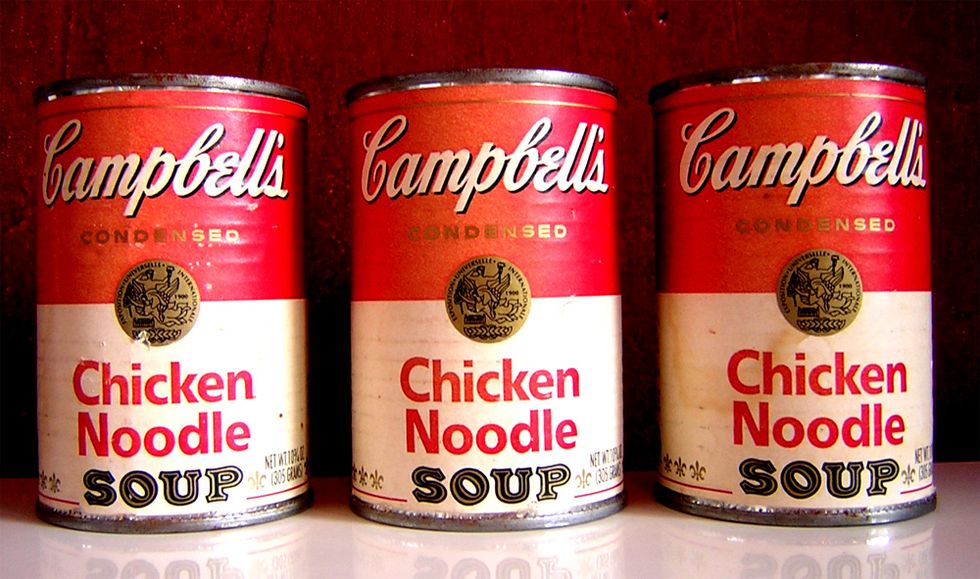Andy Warhol (1928-1987) was the epitome of an artist; he could transform anything and dabbled in a variety of techniques. A pivotal figure to the Pop Art movement, his work of art "Campbell’s Soup Cans" produced in 1962, extends beyond his resume to contemporary approaches of defining art and an attack on the vapid consumerist culture ravaging America.
Pop Art has laid its claim and become renowned for borrowing from other styles, artists, and countries. Embedded was a message that originality is dead and what we do now is but a mere replica of a distant form. Rather than reject this, people should come to terms with the reality of things, fashion, and art itself.
The 1960s movement proclaims that art can still be made, but to be self-aware and look to abandoned preconceived ideas of what constitutes an unconventional form for a canvas. It's a departure from longstanding traditions of what to represent or what can be a still-life model.
Warhol famously declared, “Everyone is an artist.” He stood true to his claims and rallied for others to create art from popular culture. Like-minded individuals adhered and followed suit. Cropping, manipulating color, distorting its transparency and other changes to a base advertisement took exhibits by storm. Warhol reproduced and contritely replicated an ordinary object recognizable to shoppers.
"Campbell’s Soup Cans" would find its debut on July 9, 1962, in the Los Angeles Gallery entitled Ferus. Each can has its own 20" x 16" canvas placed in close proximity to the other. First displayed on the wall like a painting, they hung just above shelves as a tribute to its real-life existence in a grocery store.
The number 32 is symbolic, stemming from the namesake company – Campbell’s Soup – who sold 32 soup flavors. Warhol refused the idea of selling each piece off, a surprising choice in a market where profit could be found in 32 sales. This would then be considered Warhol's official entrance into the Pop Art movement.
Instructions did not go further. Warhol did not indicate the artwork's procession. Often in art, rigid formulaic instructions are left behind to have everything in prestige place. It was Warhol's way of saying that art needed to change its approaches to things are done. Instead, the curators took the initiative and arranged them in row order of the date of each can's release. Its tomato can from 1987 would have the honor of kicking it off.
"Campbell’s Soup Cans" is a precursor to Warhol's later acclaimed style. Here, they have the look of being mass-produced from a hardworking printing machine up to its brim. But in fact, each image is hand-painted with a synthetic polymer. Warhol wanted to convey the look of them being fake to keep his vision churning.
The cans did have subtle variations, with its front product labels stating its flavor to spice things up. Nevertheless, they are identical to each other with a quick panning glance turning them into the exact same being. Upon release, criticism and parodies were spawned by the general public. Warhol's piece was dubbed a flop.
Outrage has formed, something not unknown to avant-garde artists. Calling for a decline in art academics and the critic circle alike, "Campbell’s Soup Cans" was seen as an intrusive force to the established longstanding world of art. There were standards expected to be held of what a painting was and meant. Warhol quintessentially bridges the idea that making art is equivalent to picking out a can of soup and deciding to eat it.
Another point of interest to the reactions is that this piece has no demographics, instead, it is made for everyone. This runs in contrast to other traditions, where audiences were narrowed down to recognize certain iconography or historical context. Here, anybody can read Warhol's paintings.
That is not to say Warhol's effort was as mindless as conscious consumption. In many ways, he is reflected in the cans. Warhol once said, “I used to drink it. I used to have the same lunch every day, for 20 years, I guess, the same thing over and over again.” The repetition of his life is the same as the mundane patterns others engage in. "Campbell’s Soup Cans" grants him permission to grapple with himself.
Highlighting the disposability of items and inaneness in what gets deemed important via trendsetting movements, it became entangled in that. Ironically, the cans generated consumerist cult status and high-end fashion pieces dedicated to them. Can dresses were worn by the elite at the finest dinner parties and were seen on the biggest runways. Now, its influence is far-reaching and source material for rejecting high art.


















